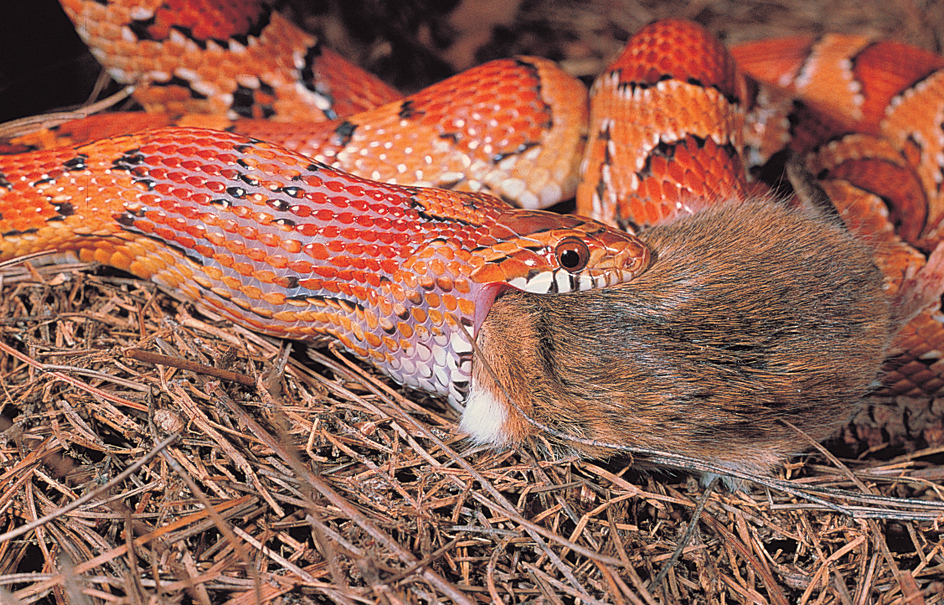Corn snake, also known as the red rat snake, is a common snake of eastern North America. It feeds mainly on birds, eggs, frogs, lizards, and rodents. The name corn snake refers to the snake’s common occurrence near buildings used to store corn. The corn snake is drawn to these areas to feed on mice and rats attracted to the corn. In addition, the belly of the snake typically has patterns that resemble the kernels of certain types of corn.

Adult corn snakes can reach up to 72 inches (180 centimeters) long. However, most measure about 24 to 48 inches (60 to 120 centimeters) long. Adults in the wild are typically orangish-brown, with orange, red, or brownish blotches. These blotches have black borders. The snake’s belly usually has a black and white checkerboard pattern. Two black stripes often run down the underside of the tail. The head and neck feature a spear-shaped pattern. The snake has round pupils. Its young tend to be less brightly colored than adults and are generally reddish-brown.
The corn snake lives in the eastern United States. It ranges from southern New Jersey to Florida and west from around Kentucky to Louisiana. It can live in a variety of habitats. The snake is often found in forests, meadows, rocky hillsides, swamps, crop fields, abandoned buildings, and residential areas.
The corn snake is active mainly at night. It digs well and often hunts rodents in their burrows. It also is a good climber and can hunt birds and other prey in the trees. The corn snake is not venomous (poisonous). Instead, it usually squeezes prey in its coils, causing the animal to suffocate.
The corn snake breeds from around April to June. Females may lay between 3 and 40 eggs, which hatch between July and September. Corn snakes can live more than 20 years in captivity.
